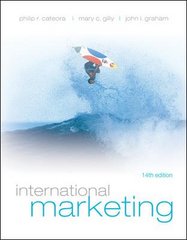Please provide graphs, calculations and explanations as necessary.
3) (23 marks) Suppose the relationships between the growth of a fish population and the population size can be described by the following equation: F(X) : 100x 10X2 where X refers to the fish stock in tonnes. (2 marks) Plot F(X) on a graph with X on the horizontal axis and F(X) on the vertical axis. Make sure you label the axes. What would the equilibrium (steady state) fish population be if there were no fishing? Explain. (1 mark) What is the maximum sustained yield (MSY) and what is the fish stock at this level? Why is this point called the MSY? (2 marks) Suppose the harvest level in any fishing season depends on the level of effort, E, and the stock, X, according to the following equation. H : 0.05EX (1) where H is the quantity of fish harvested per period in tonnes, E is an index of effort and X is the fish stock. Use Equations (1) and (2) to derive an equation for steady state harvest as a function of effort. Hint: To do this, first find an expression for the sustainable population, X, as a function of effort, E, by setting F(X) from Equation (1) equal to H from Equation (2) and solving for X, assuming X>0. Substitute the resulting expression forX back into Equation (2). This will give you an equation for steady state harvest levels as a function of effort. d) fl g) (2 marks) Suppose the price of fish is 510 thousand per tonne and total cost (in thousands of S) is given by TC1 :1.5E. Determine the open access equilibrium in this fishery (effort, harvest, and stock). (2 marks) The marginal revenue from effort (in thousands of S) is: MR : 50.005E. (This is the derivative of TR with respect to effort.) What is the marginal cost of effort? Determine the optimal level of effort, harvest, and fish stock. (5 marks) Create two graphs: one showing total revenue and total cost versus effort, and the other showing marginal revenue, marginal cost, average revenue and average cost versus effort. Indicate the optimal harvest, H*, and open access harvest, H0"l , on your graphs. On the graph created in part (a) indicate the optimal stock as well as the stock under open access. Discuss the difference in stock, effort and harvest under open access versus the efficient level. (2 marks) In the fisheries model described in this question, will it always be the case that the efficient level of harvest is higher than the open access harvest level? (Hint: What happens when the marginal cost of fishing increases or decreases?) (2 marks) Suppose the government decides to regulate this fishery by imposing a tax on the harvest? Determine algebraically what tax rate would ensure the efficient harvest is achieved. Explain your calculations. On the graph showing TR and TC created part (f), plot a curve showing total revenue after tax when the appropriate tax on harvest is implemented. (5 marks) Assume that a local fisheries council imposes an enforceable quota on the fishery with the quote set at the efficient harvest level, H*. Suppose once H* has been caught in any year, the fishery would be closed for the remainder of the year. Is this an efficient solution to the open access problem? Why or why not? Would your answer be different if the quota were divided into equal portions that were distributed to all current fishers in proportion to their historical catch? Explain








